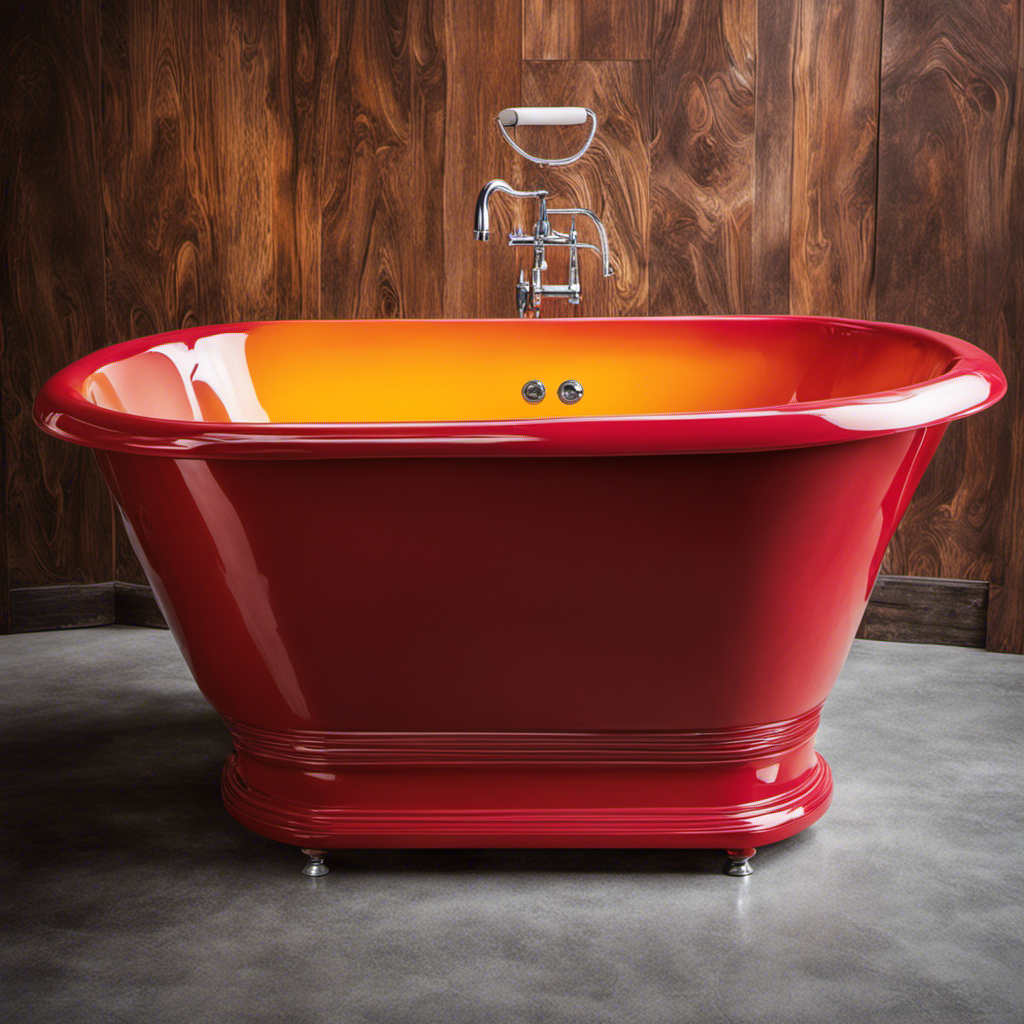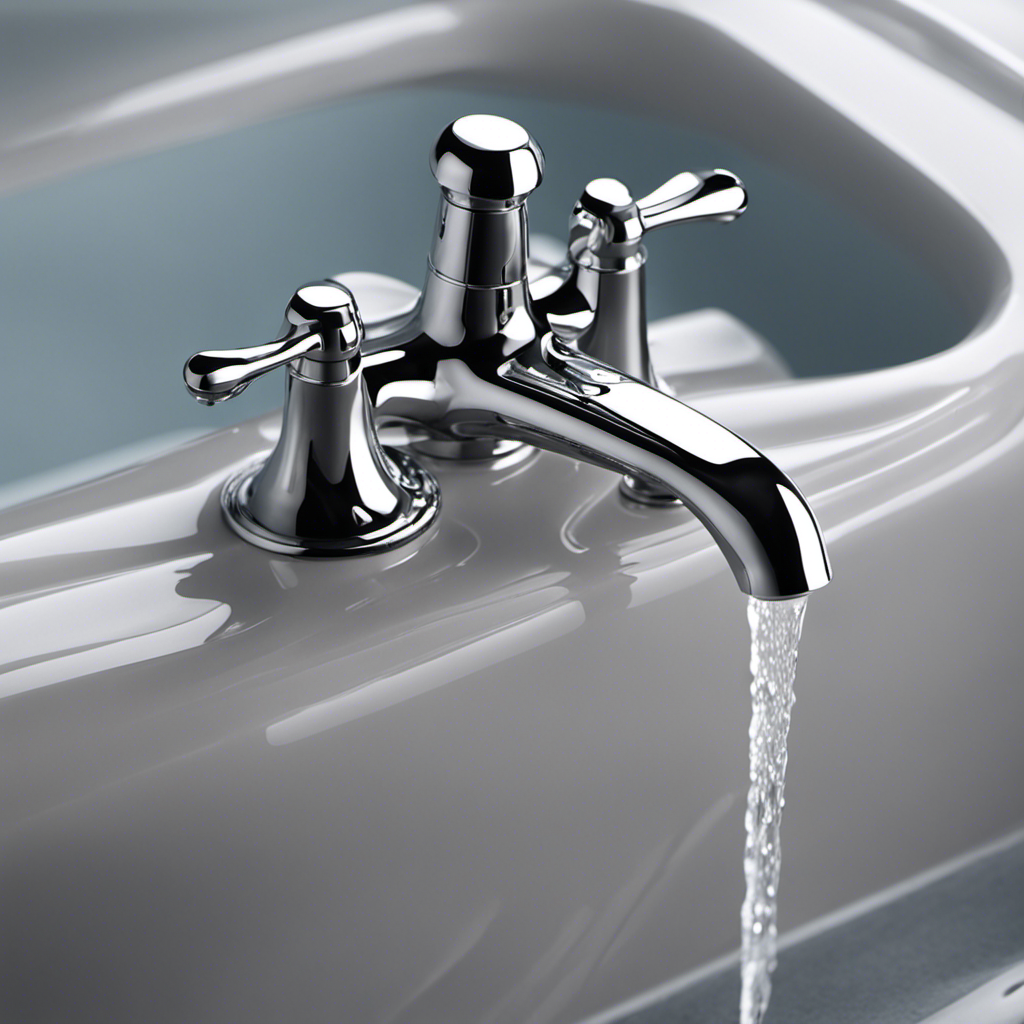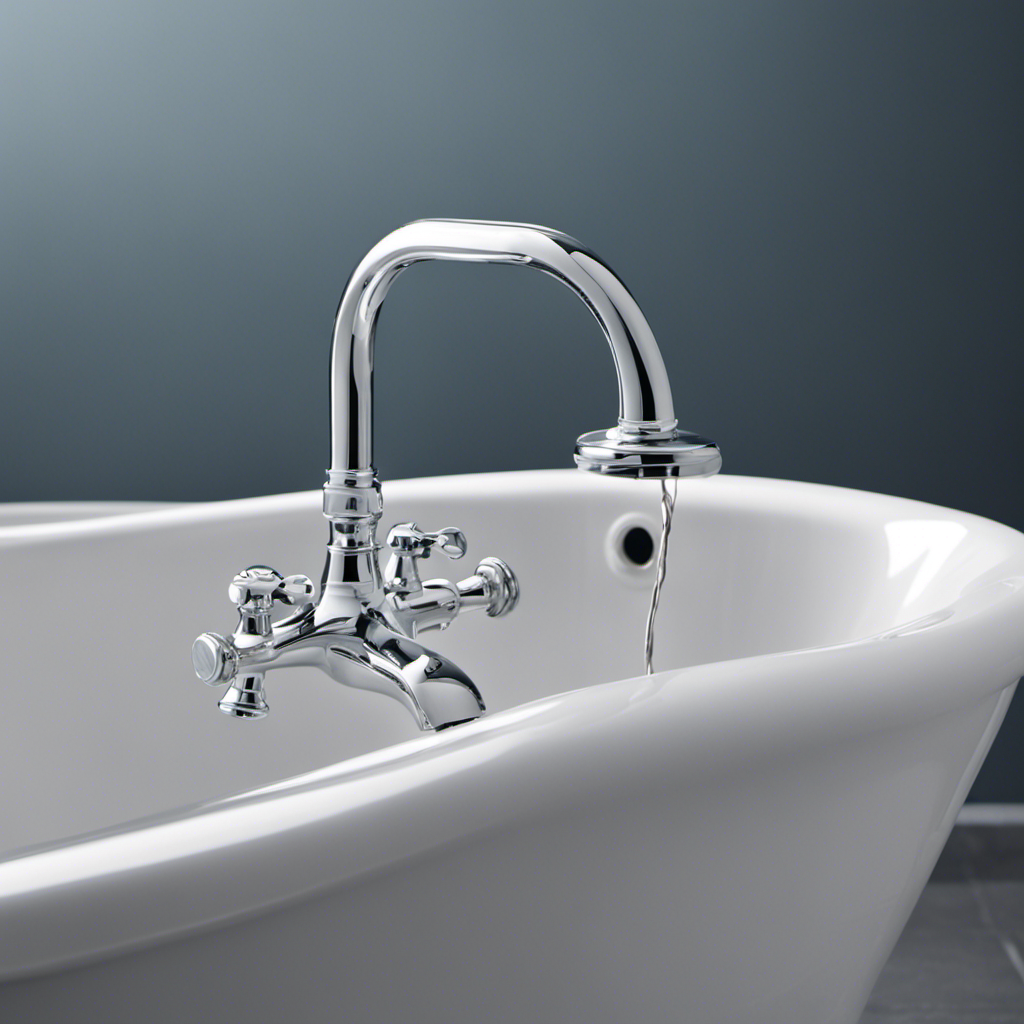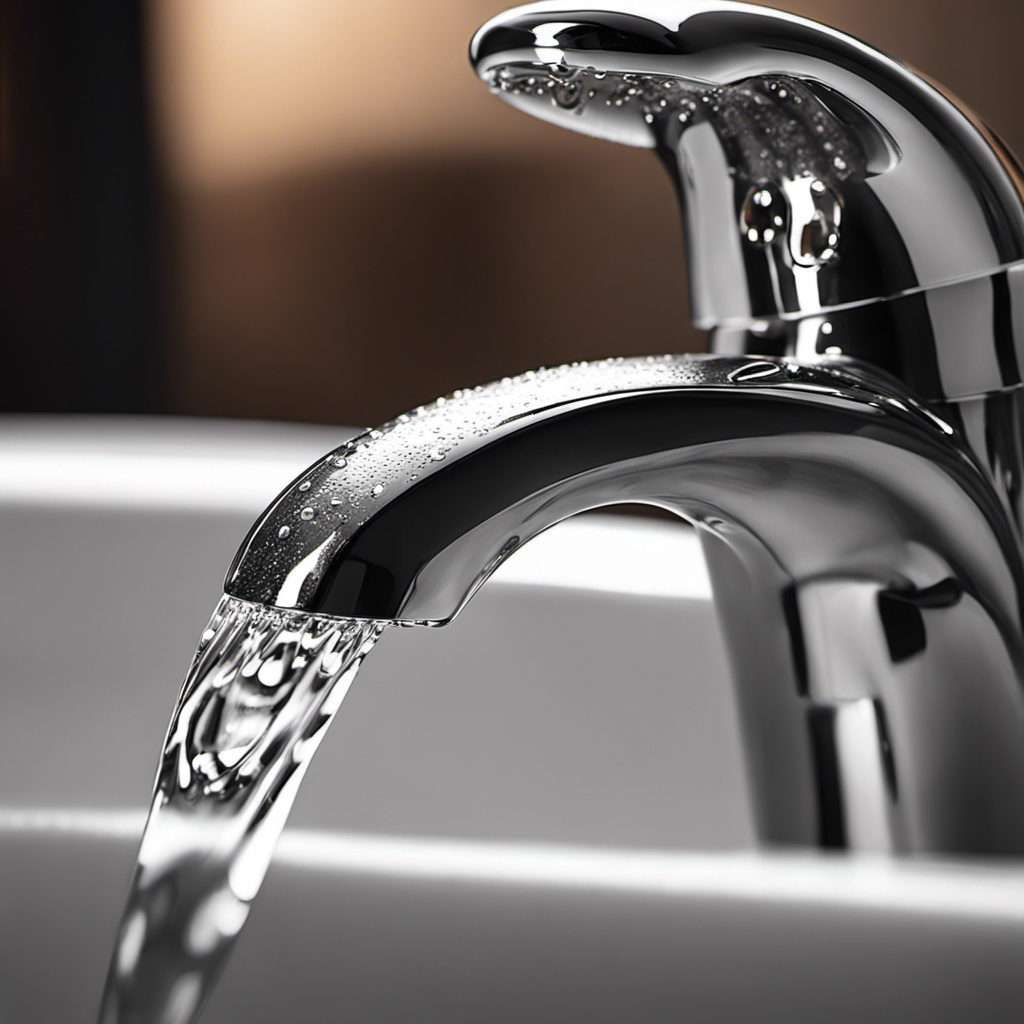Did you know that over time, plastic bathtubs can become dull, stained, and even develop cracks? If you’re tired of looking at your worn-out tub, don’t fret!
I’m here to guide you through the process of restoring your plastic bathtub to its former glory. In this article, I’ll share my expert tips and techniques for assessing the damage, cleaning the surface, repairing any cracks or chips, and restoring the color and shine.
Get ready to transform your bathtub and enjoy a rejuvenated bathing experience!
Key Takeaways
- Assess the extent of the damage and consider using a repair kit for minor issues or seeking professional restoration services for complex repairs.
- Clean the surface using a mixture of white vinegar and water, avoiding abrasive cleaners or scrub brushes.
- Repair cracks and chips by cleaning the area, applying waterproof epoxy or acrylic filler, and smoothing out the surface.
- Restore the color and shine by using specialized cleaners, refinishing kits, and scrubbing with baking soda and water.
Assessing the Damage
First, you’ll want to take a close look at the damage on your plastic bathtub. Evaluating repairs is crucial to determine the extent of the damage and the best course of action.
Start by inspecting the surface for cracks, chips, or discoloration. If the damage is minor, you may be able to fix it yourself with a repair kit specifically designed for plastic tubs. However, if the damage is extensive or if you’re unsure about your DIY skills, it’s recommended to seek professional restoration services. They have the expertise and tools to handle more complex repairs, ensuring a durable and long-lasting result.
Once you’ve assessed the damage, it’s time to move on to the next step: cleaning the surface.
Cleaning the Surface
To clean the surface, you’ll need to use a gentle cleaning solution and a soft cloth. Start by mixing equal parts of white vinegar and water in a spray bottle. Spray the solution onto the stained areas of the plastic bathtub and let it sit for a few minutes. Then, scrub the stains gently with a soft cloth or sponge. Rinse the surface thoroughly with warm water to remove any residue.
Here are some tips to help you in this process:
- Apply a paste made of baking soda and water to stubborn stains and let it sit for a few minutes before scrubbing.
- Avoid using abrasive cleaners or scrub brushes, as they can scratch the surface of the bathtub.
- Regularly clean and dry the bathtub to prevent mold growth.
- Use a mildew-resistant shower curtain to further prevent mold.
- Consider using a bathroom fan or opening a window to improve ventilation and reduce moisture in the bathroom.
Repairing Cracks and Chips
Now, you can easily fix any cracks or chips on your bathtub by using a waterproof epoxy or acrylic repair kit.
To repair deep scratches, start by cleaning the area with a mild detergent and warm water. Once dry, apply the epoxy or acrylic filler onto the scratch, making sure to fill it completely. Smooth out the surface with a putty knife or a plastic scraper, and let it dry according to the manufacturer’s instructions.
For smaller chips, clean the area and apply the filler, making sure to overfill slightly. After it has dried, use a fine-grit sandpaper to level the surface. Finally, buff the repaired area with a soft cloth to blend it seamlessly with the rest of the bathtub.
With these simple steps, your bathtub will look as good as new!
Restoring the Color and Shine
One way to bring back the color and shine of your tub is by using a specialized cleaner designed for this purpose. These cleaners are formulated to remove stains, soap scum, and mineral deposits without damaging the surface of the tub. They contain ingredients that enhance the durability of the plastic, preventing it from fading or becoming dull over time.
In addition to using a cleaner, there are other methods you can explore to restore the color and shine of your tub. These include:
- Applying a refinishing kit specifically designed for plastic tubs.
- Using a paste made from baking soda and water to scrub away stains.
- Applying a mixture of vinegar and water to remove mineral deposits.
- Using a hydrogen peroxide solution to lighten any discoloration.
- Applying a coat of car wax to protect the surface and give it a glossy finish.
Maintaining and Preventing Future Damage
Regular maintenance and preventative measures are key to keeping your tub looking vibrant and protecting it from future damage.
To prevent discoloration, it is important to regularly clean your bathtub using non-abrasive cleaners. Avoid using harsh chemicals or abrasive scrubbers that can cause scratches and dull the surface. Instead, opt for gentle cleaners and soft sponges or microfiber cloths to remove dirt and grime.
Additionally, it is crucial to avoid placing sharp objects or heavy items directly on the surface of your tub to prevent scratches. Always use a rubber mat or towel to protect the bottom of your bathtub when showering or bathing.
Conclusion
In conclusion, restoring a plastic bathtub is a practical and cost-effective solution to reviving its appearance and functionality. By assessing the damage, cleaning the surface, repairing cracks and chips, and restoring the color and shine, you can bring your bathtub back to its former glory.
Remember to maintain and prevent future damage by using appropriate cleaning products and avoiding abrasive materials. With a little effort and know-how, your bathtub can look brand new again.
So don’t throw in the towel just yet, give your bathtub the TLC it deserves and enjoy a relaxing soak in no time!










